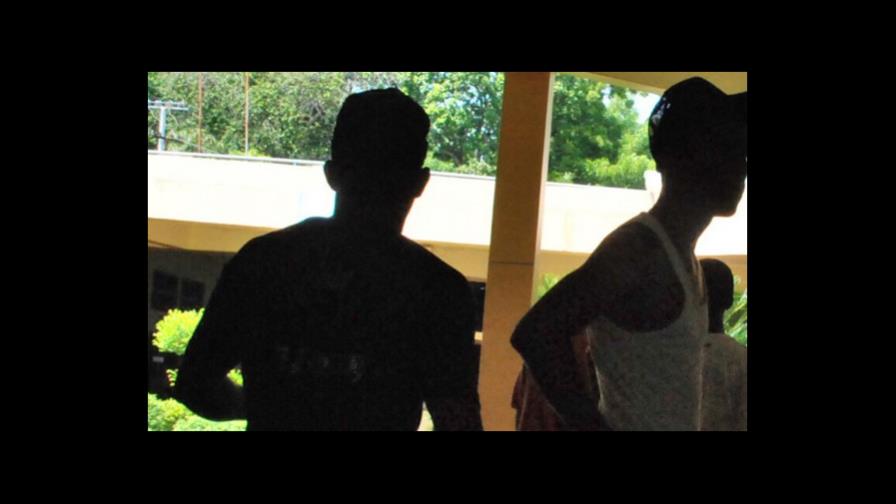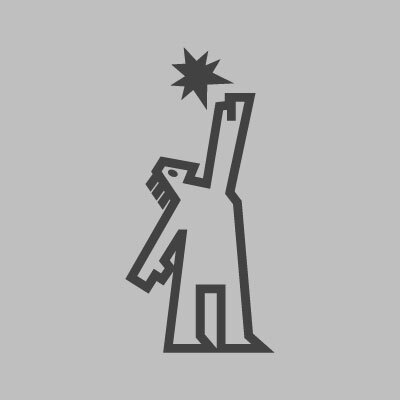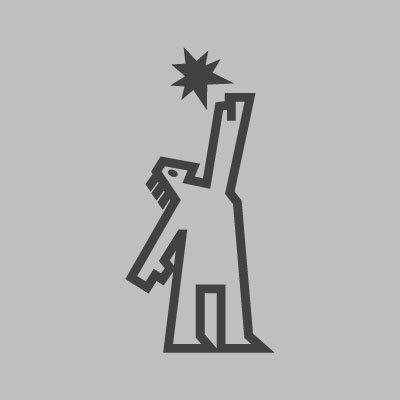"Just for today", the power that keeps them free
There are 2,600 persons receiving treatment for drug addiction

An important part of the drug users are introduced to it by their friends, and few can free themselves from the scourge that makes many of them aggressive, thieves, and in the worst of cases murderers.
They arrive skinny, nervous, shaking and without facial expressions, which in psychiatry is called the flattening effect. In the case of women, there are the added blows to different parts of the body and around the eyes, which they receive, in the majority of the cases, from their sentimental partners.
They are the sick from alcoholism and drug addiction, who carry the worst part of the business which each year moves around US$150 million, according to a study by the United Nations.
Santi is one of them. He is 44 and he began to consume alcohol at 10, cocaine at 20, and kept up a sysle of uninterrupted consumption until 31 December 2013. He looks calm, and his steady voice when he speaks of the past gives the impression that he is really willing to make the change.
In the Dominican Republic there are currently 85 programs for drug treatment and rehabilitation, both residential and out-patient, which cover around 2,600 addicts.
Information compiled by the National Drug Council, a state entity, shows a total of 1,680 patients attended, as reported by 15 treatment and rehabilitation centers, among these, 82 were minors.
Among these centers are the Meson de Dios, teen Challenge, Casa Abierta, Fundacion Ciudades de Refugio, Fundacion Volver, and the most recent one is the Center for the Integrated Attention of the Addict (CAID) which works out of the Francisco Moscoso Puello Hospital.
The majority (of addicts) began their consumption through pressure from their "friends" who offered them a way out of an empty existence that many times they create in their weak minds which makes them more vulnerable to the use and abuse of alcohol and illegal drugs. Later on they abandon these new addicts and leave them to fight their own battles.
To come away "victorious" from this war is not easy. That is why these rehabilitation centers, like CAID, have appeared. The CAID began on 9 January 2013.
It is an autonomous center of the Ministry of Public Health, the only one specialized in attention to drug users that exists in the country.
Psychiatrist Ruth Santana is its director, and she said that her main function is to work with substance users, both legal and illegal as well as with other addictive conduct.
The testimonies are varied, but the hope and the enthusiasm of improving their condition in life and rescue their families are similar. The first attitude that the persons should have is to recognize that they are sick persons that need help and that they have to let themselves be helped.
Just for today
When Santi decided to give himself a "chance" to deal with the problem, he recalls that the therapist gave him two options: continue being the hostage of the vice or give himself the opportunity and stay in the program.
Those that opt for the second option, such as those that are in this report, the recommendation is that "what you did not do yesterday to keep yourself clean, do it today," as well as keeping the battle cry of "Just for today": Only today I will not take, just for today I will not consume drugs, and this they repeat daily and in their moments of weakness.
This is what Santi did on 31 December when he decided to not drink any more alcohol or do any more cocaine.
Addiction is a chronic disease, and the relapses are part of the process and behind many relapses there are good results, says the therapist Kirsi Acosta, who for her support of the addicts has become a presence among them and who they mention in each conversation on the issue.
Acosta explains that an addict consumes because he is content and because he is unhappy, because he is working or because he was fired. This is to say, they always find a reason not to quit.
An important step by the persons in treatment is to stay away from the places and persons that move them into situations of consumption, so that they should change their social circles and look for new friends.
The principle excuse that many addicts give is that they were raised without parents, but the therapist reproaches them saying that this is no reason to consume and that they have to face life without them (the parents.)
The user has the opportunity to "clean himself up" and not relapse, for which he need a lot of will power and perseverance. "We cannot get tired or lose motivation because of a relapse. What is advisable is to review the program that was created for the user," she said.
Rosa: Disfigured by addiction
She is the mother of three children, 12,7,and 6. Going to CAID was not her idea, but rather it came from her family, which took her there on 27 February 2013. That day she could hardly stay on her feet, her eyes were practically closed because of a beating she received, which also left her face disfigured.
She is called Rosa and is another patient that wished to shar her story with the intention of revealing how she came to the center and her progress.
Rosa, approximately five feet, five inches tall, yellowish in color and thin, has stood out since she arrived at the center, one for her high tone of voice and for the avant-garde way of dressing.
She love baseball hats, and if she lived in a country with a temperate climate, he would surely choose to wear boots, scarves, overcoats and capes.
"Really, I was not ready to go into the program, I did not want to change, but as I became involved with my therapist and companions, I feel the need to be here," she says convincingly.
She was dependent on cocaine, alcohol and marijuana, what they call the three hits (poly-use).
"Here they promised me that there would be group therapy, family therapy, everything a process, and this has helped me a lot. My therapist is a very strong person, in reality I need that, because I was not in this really," she pointed out.
Rosa is 31, and she began to consume at 22. The way in which she has lived these last years make her appear to be much older. She defines herself as a rebel, difficult to get along with, above all with her family and loved ones, and she attributes this temperament to have been among the wrong people who influenced her to "consume things."
"First it was the alcohol, then when I saw that it made me very drunk, I took cocaine," substances that she has not used for over a year.
About the recent past, she does not tire of recalling the day "they broke" her face with blows, to she point where she could not recognize herself, because that was when she decided to accept the help of her family.
Rosa stopped her studies of law, due to her addiction, but she thinks of returning, since she feels sure that she could finish the studies and in this her therapists give her encouragement. Many addicts do not finish primary school.
At the beginning of the year, the authorities of CAID recognized Rosa for her advancement in the process of getting cleaned up and her cooperation with other addicts.
That day she showed her emotion and repeated over and over again her sorrow because her aunt, the one who took her there and that encouraged her to go to the center, could not be present at the ceremony.
They arrive skinny, nervous, shaking and without facial expressions, which in psychiatry is called the flattening effect. In the case of women, there are the added blows to different parts of the body and around the eyes, which they receive, in the majority of the cases, from their sentimental partners.
They are the sick from alcoholism and drug addiction, who carry the worst part of the business which each year moves around US$150 million, according to a study by the United Nations.
Santi is one of them. He is 44 and he began to consume alcohol at 10, cocaine at 20, and kept up a sysle of uninterrupted consumption until 31 December 2013. He looks calm, and his steady voice when he speaks of the past gives the impression that he is really willing to make the change.
In the Dominican Republic there are currently 85 programs for drug treatment and rehabilitation, both residential and out-patient, which cover around 2,600 addicts.
Information compiled by the National Drug Council, a state entity, shows a total of 1,680 patients attended, as reported by 15 treatment and rehabilitation centers, among these, 82 were minors.
Among these centers are the Meson de Dios, teen Challenge, Casa Abierta, Fundacion Ciudades de Refugio, Fundacion Volver, and the most recent one is the Center for the Integrated Attention of the Addict (CAID) which works out of the Francisco Moscoso Puello Hospital.
The majority (of addicts) began their consumption through pressure from their "friends" who offered them a way out of an empty existence that many times they create in their weak minds which makes them more vulnerable to the use and abuse of alcohol and illegal drugs. Later on they abandon these new addicts and leave them to fight their own battles.
To come away "victorious" from this war is not easy. That is why these rehabilitation centers, like CAID, have appeared. The CAID began on 9 January 2013.
It is an autonomous center of the Ministry of Public Health, the only one specialized in attention to drug users that exists in the country.
Psychiatrist Ruth Santana is its director, and she said that her main function is to work with substance users, both legal and illegal as well as with other addictive conduct.
The testimonies are varied, but the hope and the enthusiasm of improving their condition in life and rescue their families are similar. The first attitude that the persons should have is to recognize that they are sick persons that need help and that they have to let themselves be helped.
Just for today
When Santi decided to give himself a "chance" to deal with the problem, he recalls that the therapist gave him two options: continue being the hostage of the vice or give himself the opportunity and stay in the program.
Those that opt for the second option, such as those that are in this report, the recommendation is that "what you did not do yesterday to keep yourself clean, do it today," as well as keeping the battle cry of "Just for today": Only today I will not take, just for today I will not consume drugs, and this they repeat daily and in their moments of weakness.
This is what Santi did on 31 December when he decided to not drink any more alcohol or do any more cocaine.
Addiction is a chronic disease, and the relapses are part of the process and behind many relapses there are good results, says the therapist Kirsi Acosta, who for her support of the addicts has become a presence among them and who they mention in each conversation on the issue.
Acosta explains that an addict consumes because he is content and because he is unhappy, because he is working or because he was fired. This is to say, they always find a reason not to quit.
An important step by the persons in treatment is to stay away from the places and persons that move them into situations of consumption, so that they should change their social circles and look for new friends.
The principle excuse that many addicts give is that they were raised without parents, but the therapist reproaches them saying that this is no reason to consume and that they have to face life without them (the parents.)
The user has the opportunity to "clean himself up" and not relapse, for which he need a lot of will power and perseverance. "We cannot get tired or lose motivation because of a relapse. What is advisable is to review the program that was created for the user," she said.
Rosa: Disfigured by addiction
She is the mother of three children, 12,7,and 6. Going to CAID was not her idea, but rather it came from her family, which took her there on 27 February 2013. That day she could hardly stay on her feet, her eyes were practically closed because of a beating she received, which also left her face disfigured.
She is called Rosa and is another patient that wished to shar her story with the intention of revealing how she came to the center and her progress.
Rosa, approximately five feet, five inches tall, yellowish in color and thin, has stood out since she arrived at the center, one for her high tone of voice and for the avant-garde way of dressing.
She love baseball hats, and if she lived in a country with a temperate climate, he would surely choose to wear boots, scarves, overcoats and capes.
"Really, I was not ready to go into the program, I did not want to change, but as I became involved with my therapist and companions, I feel the need to be here," she says convincingly.
She was dependent on cocaine, alcohol and marijuana, what they call the three hits (poly-use).
"Here they promised me that there would be group therapy, family therapy, everything a process, and this has helped me a lot. My therapist is a very strong person, in reality I need that, because I was not in this really," she pointed out.
Rosa is 31, and she began to consume at 22. The way in which she has lived these last years make her appear to be much older. She defines herself as a rebel, difficult to get along with, above all with her family and loved ones, and she attributes this temperament to have been among the wrong people who influenced her to "consume things."
"First it was the alcohol, then when I saw that it made me very drunk, I took cocaine," substances that she has not used for over a year.
About the recent past, she does not tire of recalling the day "they broke" her face with blows, to she point where she could not recognize herself, because that was when she decided to accept the help of her family.
Rosa stopped her studies of law, due to her addiction, but she thinks of returning, since she feels sure that she could finish the studies and in this her therapists give her encouragement. Many addicts do not finish primary school.
At the beginning of the year, the authorities of CAID recognized Rosa for her advancement in the process of getting cleaned up and her cooperation with other addicts.
That day she showed her emotion and repeated over and over again her sorrow because her aunt, the one who took her there and that encouraged her to go to the center, could not be present at the ceremony.

 Diario Libre
Diario Libre
 Diario Libre
Diario Libre